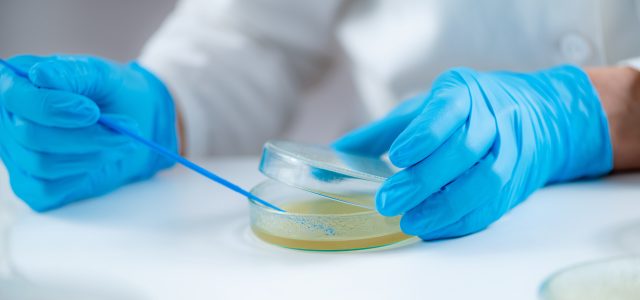Call for your appointment today 914-666-4665 | Mt. Kisco, New York
You finished treatment. The antibiotics are done. Your doctor says you’re cured.
So, why do you still feel terrible? For many patients, the answer may lie in Lyme persisters — dormant bacteria that survive antibiotic therapy and can reignite symptoms long after treatment ends.
The Role of Lyme Persisters
For many Lyme patients, fatigue creeps back. Joint pain returns. Brain fog clouds daily life. It’s not imagination—it may be persistence.
Lyme persisters are bacteria that survive antibiotics by going dormant or changing form. They slow their metabolism, hide in tissues or biofilms, and wait.
Biofilms are protective communities where bacteria cluster under a shield of slime. They act like bunkers, making antibiotics up to 1,000 times less effective.
When you stop taking antibiotics, these hidden bacteria “wake up” and symptoms begin to flare again, leaving patients wondering why “successful treatment” didn’t bring recovery.
What We’ve Learned From Tuberculosis
The idea of bacterial persistence isn’t new. Decades ago, scientists studying tuberculosis (TB) discovered that even after months of antibiotics, a small number of bacteria remained alive but dormant. These “persisters” weren’t resistant in the usual genetic sense. They simply slowed their metabolism, hid inside cells, and waited for conditions to improve. When treatment ended, they reactivated, causing relapse.
It took years of research to recognize that curing TB required longer, multi-drug therapy that targeted bacteria in different metabolic states — not just the actively growing ones.
TB taught medicine that some infections can’t be cured by duration alone; they demand an understanding of how bacteria behave under stress.
This same lesson is now being applied to Lyme disease. The bacteria that cause Lyme, Borrelia burgdorferi, appear capable of similar dormancy. Under antibiotic pressure, they shift into slow-growing or non-dividing forms that tolerate drugs designed for active infection. When treatment stops, they can re-emerge, triggering symptoms.
This doesn’t mean Lyme behaves identically to TB but it shows that dormancy and relapse aren’t new or mysterious phenomena in infectious disease.
Why Lyme Persisters Matter
Understanding Lyme persisters changes how we interpret lingering symptoms. It challenges the assumption that post-treatment illness must be purely immune-driven or psychosomatic.
Persistent bacteria could continue to provoke inflammation, immune dysregulation, and neurologic symptoms, which explains why recovery can feel incomplete even after treatment.
TB taught us that persistence biology demands patience, innovation, and humility. It takes time to learn how to reach dormant microbes without harming the patient.
Lyme research is still early in that journey, but recognition is the first step toward progress.
Rethinking Recovery
Lingering symptoms don’t always mean treatment failed but may reflect how Borrelia interacts with the immune and nervous systems long after the initial infection.
Recovery from Lyme disease means more than the absence of bacteria. It’s about restoring equilibrium — reducing inflammation, repairing disrupted systems, and allowing the body time to heal.
The long arc of TB research shows that persistence isn’t a mystery. It’s a survival strategy.
The more we understand that in Lyme disease, the closer we move toward therapies that truly address both infection and recovery.
The Takeaway
If you’re still sick after “successful” Lyme treatment, you’re not alone and you’re not imagining it.
Lyme persisters may hold the key to why symptoms return and why antibiotics alone don’t always bring full recovery.
Like TB, Lyme disease reminds us that eradicating an infection is only part of healing.
Recognizing persistence is the first step toward developing smarter, more complete approaches to care.
Have you struggled with symptoms after “successful” Lyme treatment?
Share your story below—your experience could help others understand that persistence is real.
Related Articles:





Lyme Disease has damaged my speech. It’s really tiring to talk properly. I went through intravenous antibiotics and this did not help. I guess it could be persistors, auto immune etc.. but I can’t afford any more tests or treatment so I’ll have to live with it.
I have patients who were not informed that there were oral antibiotic treatments that have been overlooked ie treatment for Babesia
Yes, I have chronic Lyme (Borrelia no co-infections). After many years taking different antibiotics then Samento/Banderol I am now in a state where I have continuous die-off, which worsens with more exercise. My hypothesis is that, with a lot less stress and more exercise in the last few years my immune system has ‘woken up’ and is clearing the bacteria which is slowly emerging from biofilm/cysts. I can’t find others (patients nor LLMDs) talking about this state that I refer to ‘biofilm clearing. I read Biological Sciences at university and refer to myself as a living petri dish! I wish I could find relevant information/others who are experiencing this. So Dr Cameron – if you have any thoughts they would be gratefully received. Thank you, Nina
Daniel I entirely agree and went through my GP saying “once you have antibiotics all the bacteria is dead”, as well I had two doctors in the tropical disease section of a very large hospital say exactly the same thing. I also agree our body can react to dead bacteria or there can be other reasons however persistent borrelia or other bacteria have ways to avoid antibiotics or they are resistant to antibiotics so some bacteria survive and repopulate.
I was finally diagnosed with Ehrlichia with a strong suspicion for Lyme in July 2024, after over 3 years of symptoms. I was put on a 3 month antibiotic treatment and after initially feeling absolutely horrible I felt totally myself within a month. It was life changing that I finally felt better and finally knew I wasn’t crazy because of all these years I was doubting myself.
After the 3 months I went off and I absolutely plummeted worse then before. Symptoms increased to a point I was bedridden.
My doctors decided to put me back on antibiotics for a year. I’m currently 7 months in and feel fantastic. I’ve been diligently following a Lyme “routine” of supplements and detox on top of the antibiotics but I’m terrified of going back off.
I’m in Canada with no LLMDs. I have two wonderful doctors who both admit to not knowing much about the disease, but are both good with me bringing well thought out research to my appointments and going over it and applying it if they feel it’s worth the risk. They say they are willing to put me back on antibiotics after the year if needed, but I’ve also been looking into treatments like double dapsone because I feel that if we need a next round we’ll need a different approach.
Sorry for the long story but this article really spoke to me and the ask of making sure others knew this happens by commenting brought tears to my eyes. One of the hardest things about chronic Lyme is not being believed and in turn thinking you are crazy.
I have not treated with Dapsone. I rely on other antibiotics